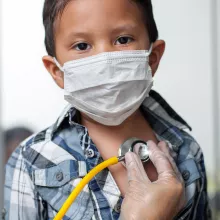Publications Menu
Summary: Violence against American Indian and Alaska Native (AIAN) women, children, two-spirit individuals, men, and elders is a serious public health issue. Violence may result in death (homicide), and exposure to violence has lasting effects on the physical and mental health of individuals, including depression and anxiety, substance abuse, chronic and infectious diseases, and life opportunities, such as educational attainment and employment. All communities are affected by some form of violence, but some are at an increased risk because of intergenerational, structural, and social factors that influence the conditions in communities where people live, learn, work, and play.
Using a violence prevention public health approach, authors discuss the role public health can play in addressing and preventing the prevalence of missing or murdered indigenous persons (MMIP). This paper is written as a public health primer and includes a selective overview of public health and Native public health research. It also includes case studies and Native experts’ reflections and suggestions regarding the use of public health knowledge and theory, as well as Native knowledge and cultural practices to combat violence. An effective public health prevention approach is facilitated by complex, contextual knowledge of communities and people, including individual and community risk factors, as well as protective factors in strengthening Native communities and preventing MMIP.
This article references the California Health Interview Survey (CHIS) and AskCHIS™.
Read the Publication:
- Journal Article: American Indian and Alaska Native Knowledge and Public Health for the Primary Prevention of Missing or Murdered Indigenous Persons













